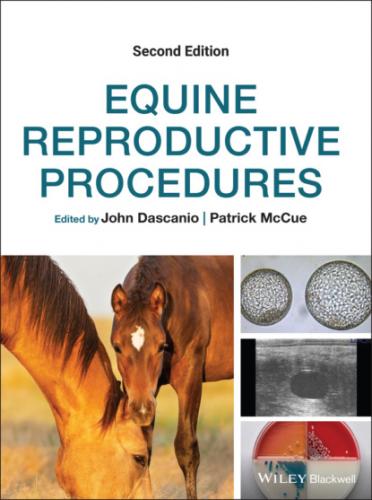Figure 5.2 Mare with a purulent vaginal discharge and dried discharge on the inner aspect of the hind legs.
Interpretation
The vulva should be vertically orientated.
The labia should meet without disruption of the mucosal seal.
Two thirds or more of the vulvar opening should be below the pelvic brim.
Upon separation of the vulvar lips and visualization of the vestibulo‐vaginal fold, no air should enter the vagina.
Figure 5.3 Normal chalky white discharge on the ventral labia from urination.
Figure 5.4 Mare with a positive Windsucker test. The arrow points at the opening into the cranial vagina. The vestibulo‐vaginal fold is non‐functional in this mare.
Reference
1 Dascanio JJ. 2011. External reproductive anatomy. In: McKinnon AO, Squires EL, Vaala WE, Varner DD (eds). Equine Reproduction, 2nd edn. Ames, IA: Wiley Blackwell, pp. 1577–81.
Further Reading
1 Gadd JD. 1975. The relationship of bacterial cultures, microscopic smear examination and medical treatment to surgical correction of barren mares. Proc Annu Conv Am Assoc Eq Pract 21: 362–8.
2 Pascoe RR. 1979. Observations on the length and angle of declination of the vulva and its relation to fertility in the mare. J Reprod Fertil Suppl 27: 299–305.
3 Pouret EJM. 1982. Surgical technique for the correction of pneumo‐ and urovagina. Eq Vet J 14: 249.
6 Removal of a Persistent Hymen
John J. Dascanio
School of Veterinary Medicine, Texas Tech University, USA
Introduction
The hymen may be a complete or partial tissue wall separating the vagina and vestibule. The hymen is usually ruptured at breeding or disrupted manually during artificial insemination. Once the hymen is opened, the remaining tissue is referred to as the vestibulo‐vaginal fold. The purpose of the vestibulo‐vaginal fold is to act as a one‐way valve, helping to prevent air and contaminants from entering the vagina.
Occasionally, the hymen is very thick and accumulates a significant amount of secretions behind it. These secretions may be vaginal or uterine in origin. Typically, the secretions have a white liquid to mucoid consistency.
If the hymen does not rupture with digital pressure, a surgical procedure may be needed to open the thickened membrane. Care should be taken to ensure that there is a complete reproductive tract on the vaginal side of the hymen, as segmental aplasia of the reproductive tract could be present with thickened hymenal tissue. Transrectal ultrasound may be used to visualize accumulated fluid within the vagina/cervix/uterus to confirm the presence of the reproductive tract. Conversely, a small hole may be created in the hymen and an endoscope used to explore the tissue in front of the hymen to confirm that the vagina and cervix are present before expanding the incision in the hymen.
Equipment and Supplies
Tail wrap, tail rope, non‐irritant soap, roll cotton, stainless steel bucket, disposable liner for bucket, paper towels, surgery gloves, basic surgical pack, sedation, local anesthetic, needles and syringes.
Technique
Remove feces from the rectum.
Place a tail wrap and a tail rope.
Clean and dry the perineum (see Chapter 3).
For a thin membrane hymen, a finger or blunt‐tipped instrument such as the end of closed Metzenbaum scissors may be used to exert pressure on the central aspect of the hymen to disrupt it. The hand should be able to extend beyond the hymen to ensure that the hymen is opened adequately for breeding.
For a thick membrane hymen, using Addison tissue forceps or towel forceps, grasp the hymen near its center and pull outward to evert it through the vulvar opening (Figure 6.1).Figure 6.1 A thick hymen grasped with sponge forceps. A small hole was created with a scalpel blade and a creamy white discharge can be seen exiting the incision.
If the mare resents manipulation of the hymen, a local anesthetic may be infiltrated into the surrounding tissue or an epidural may be performed.
For a thick hymen, a 1 cm hole is carefully created near the center of the hymen using a scapel or scissors.
Any discharge from the cut hole should be noted at this time. Typically a white liquid will discharge, which is an accumulation of uterine/vaginal secretions.
Using a finger, small speculum, or endoscope, examine the area just cranial to the hole in the hymen to confirm the presence of a normal reproductive tract. In some cases, agenesis of the reproductive tract may be present, and further surgical intervention should be discontinued. Confirmation of an intact reproductive tract may also be done with palpation and ultrasound examination per rectum.
Once a normal reproductive tract is confirmed, the hole may be enlarged with Metzenbaum scissors so that a circular area of hymen is removed.
Care should be taken to leave a rim of tissue around the hymen so as to not compromise the wall of the vestibule or vagina (Figure 6.2).
Occasionally, it may be necessary to dilate the remaining tissue with the balloon from a Foley catheter to enlarge the vestibulo‐vaginal area.
Interpretation
A creamy white discharge with some hemorrhage may be present for a few days post‐surgery.Figure 6.2 The incision is enlarged with Metzenbaum scissors and a circular piece of tissue removed from the central aspect of the hymen.
The mare should not be bred immediately after surgery, but may be bred at the next estrus, to make sure that any pathology from the pressure from retained vaginal/uterine secretions can resolve first.
